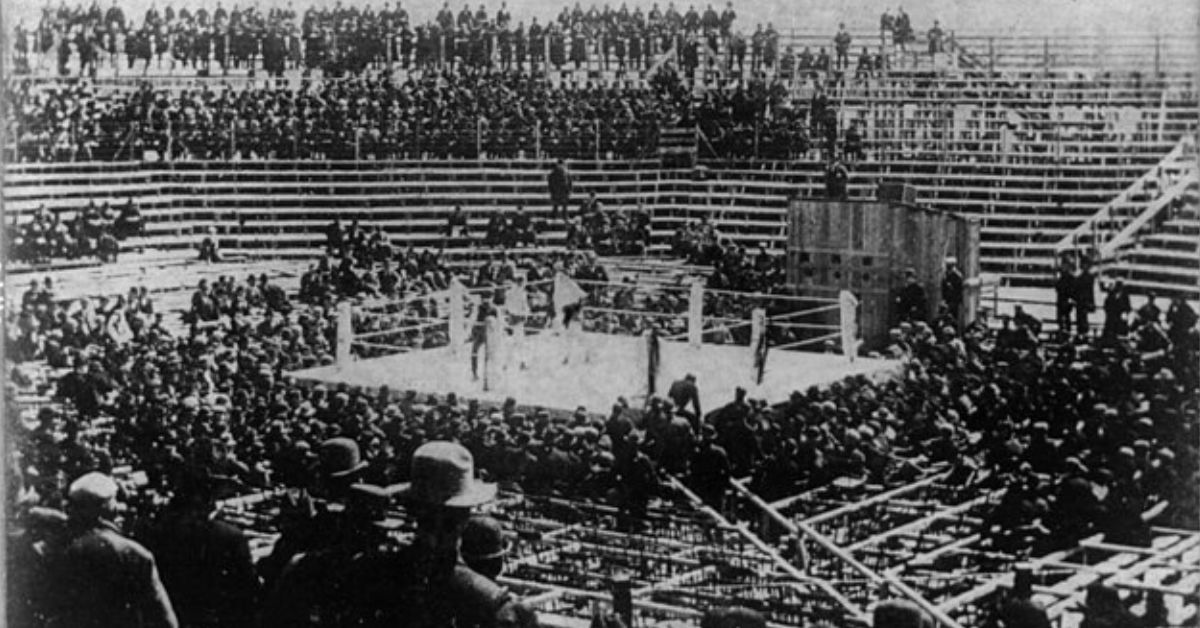The Queensberry Rules of Boxing

The modern sport of boxing has a rich history that now spans over three centuries. In the late 1800s, the official rules of boxing were known as the “Queensberry Rules of Boxing.”
Here’s a complete breakdown of the Queensberry rules of boxing and how they were established. Check out the history of these rules below and see how they helped create the sport of modern boxing.
What are the Queensberry Rules of Boxing?
The Marquess of Queensberry Rules or Queensberry Rule for short are the universally accepted rules of modern boxing. These rules set the groundwork and structure for the rules of modern boxing that were later created.
Through the Queensberry rules of boxing, the sport of boxing was able to grow and evolve. Not just boxing, but also modern Muay Thai and kickboxing.
Boxing Before The Queensberry Boxing Rules

Before the Queensberry rules of boxing were adopted, there were little to no rules for boxing competitions. It was seen as a thing uncivilized brutes, who enjoyed hurting people took part in.
Boxing events before the late 1800s were all bare knuckle affairs. However, there was a list of rules or guidelines that boxers of the time did loosely follow.
One of the guidelines that were followed for bare-knuckle boxing competitions were the London Prize Ring Rules.
London Prize Ring Rules
The London Prize Ring Rules were created based on an early list of boxing guidelines called the Broughton Rules. Boxing organizers promulgated the Broughton Rules in 1938 to create the London Prize Ring Rules.
These rules were used predominantly within Europe and were revised in 1953. This list of rules revised in 1953 consisted of 29 rules for pro bare-knuckle boxing.
London Prize Ring Rules were enforced until 1889. Champion boxer John L. Sullivan first won the last title under this rule set in 1882.
Sullivan’s last title defense under these rules was in 1889 against Jake Kilrain. After this bout, the rules faded and every major organization began using the Queensberry boxing rules.
The History of the Queensberry Rules of Boxing?

The person credited with creating the official Queensberry rules of boxing was famed Welsh sportsman John Graham Chambers. The Welsh sportsman participated in various sports, which included boxing.
However, Chambers was a harsh critic of the London Prize Rules. He felt under that rule set, boxing was more of a brawling brute event than a real sport.
During this time boxing was looked down upon as low-class. Chambers wanted to legitimize the sport of boxing, which is why he set off to create his own rules.
In 1865, Chambers wrote down former rules that would become known as the Queensberry Rules of Boxing. The Duke of Queensberry, John Sholto Douglas gave his name to the rules, however he had no hand in creating them.
These rules were published in 1867 and the sport of boxing gradually evolved into what it is today.
The Official 12 Queensberry Boxing Rules
The official Queensberry Rules of Boxing consist of 12 simplified rules, which all major boxing governing bodies adopted.
- To be a fair stand-up boxing match in a 24-foot ring, or as near that size as practicable.
- No wrestling allowed.
- The rounds to be of three minutes’ duration, and one minute’s time between rounds.
- If either man falls through weakness or otherwise, he must get up unassisted, the boxer has 10 seconds to allow him to do so, the other man meanwhile to return to his corner, and when the fallen man is on his legs the round is to be resumed and continued until the three minutes have expired. If one man fails to come to the scratch in the 10 count allowed, it shall be in the power of the referee to give his award in favour of the other man.
- A man hanging on the ropes in a helpless state, with his toes off the ground, shall be considered down.
- No seconds or any other person to be allowed in the ring during the rounds.
- Should the contest be stopped by any unavoidable interference, the referee to name the time and place as soon as possible for finishing the contest; so that the match must be won and lost, unless the backers of both men agree to draw the stakes.
- The gloves to be fair-sized boxing gloves of the best quality and new.
- Should a glove burst, or come off, it must be replaced to the referee’s satisfaction.
- A man on one knee is considered down and if struck is entitled to the stakes.
- That no shoes or boots with spikes or sprigs (wire nails) be allowed.[8]
- The contest in all other respects to be governed by revised London Prize Ring Rules.
The Reception and Gradual Adoption of the Queensberry Rules
At first, the Queensberry boxing rules were heavily criticized by professional fighters. Many considered the new rules “unmanly” and preferred the London Prize Rules.
They viewed the Queensberry boxing rules as unmanly predominantly due to the inclusion of boxing gloves. The opinions of many fighters during this era quickly changed once they took part in fights under the rules.
One fighter, who helped change the opinion of fighters and the public was champion James “Jem” Mace. Jem was a champion under London Prize Rules, but he loved the inclusion of gloves.
His popularity during the time and views on the Queensberry boxing rules quickly changed the opinions of many. In a short time, the Queensberry boxing rules would be the rule set used across the world.
The Queensberry Rules Get Adopted in North America

By the time the 1900s came around, all major boxing organizations and governing bodies used the Queensberry Rules. The rules were also adopted within the US and Canada, where boxing was exploding in popularity.
The UK’s dominant supremacy in boxing would gradually end due to the rise of evangelical Christianity within the nation. This allowed numerous champions from the US, Canada, and Ireland to dominate the sport of boxing.
During this time, the US and Canada were made up predominantly of immigrants. These immigrants embraced boxing and supported top fighters, who shared their ethnicity.
Many black boxers also began to dominate the sport of boxing. This included legends like Jack Johnson and Joe Gans.
The Evolution From Queensberry Rules on Modern Boxing Rules
The Queensberry boxing rules had a profound impact on the evolution of modern boxing. Thanks to the Queensberry rules being widely implemented, they influenced modern boxing in six particular facets.
- Standardization of Rules
- Introduction of Gloves
- Round System
- Banning Grappling & Wrestling
- Increased Popularity
- Influenced Modern Regulations
The Standardization of Rules
The Queensberry boxing rules provided a standardized set of regulations for boxing matches. Thanks to this standardization, boxing became a legitimate sport with more organization.
The Introduction of Boxing Gloves
One of the significant changes brought about by the Queensberry rules was the introduction of boxing gloves. Before the adoption of gloves, all boxing bouts were bare-knuckle competitions.
The problem with bare-knuckle bouts during this time was there were more injuries and the bouts lasted hours. After gloves were added, boxers sustained less injuries and attracted more fans, who avoided the brutish bare-knuckle fights.
Round System
Queensberry boxing rules created the concept of dividing a boxing contest into rounds. Typically, making the rounds 3 minutes each and have a 1 minute rest between each round.
This format allowed for more organization of the boxing events and increased spectator appeal. More importantly, the round system created the framework that modern boxing still uses.
Banning Grappling & Wrestling
Before the adoption of the Queensberry rules, boxers would get away with different grappling and wrestling techniques. Under these rules, grappling and wrestling were forbidden, which made the contest a straight duel of fists.
Increased Popularity
The adoption of these rules created more spectator appeal, which increased the fan base for boxing. Now with an emphasis on skills, strategy, and sportsmanship, boxing grew both as a sport and a widely practiced martial art.
Influenced Modern Regulations
The Queensberry boxing rules also influenced the creation of the regulations of modern boxing. Thanks to those rules, everything from weight classes, ring dimensions, and judging criteria were able to be created.
The Wrap Up
Overall, the Queensberry rules of boxing played a pivotal role in the evolution of modern boxing. Everything from the gloves, ring, and overall structure of the sport of boxing as we know it today.
Thanks to the Queensberry rules, boxing was able to evolve into the sport we all watch and love.






